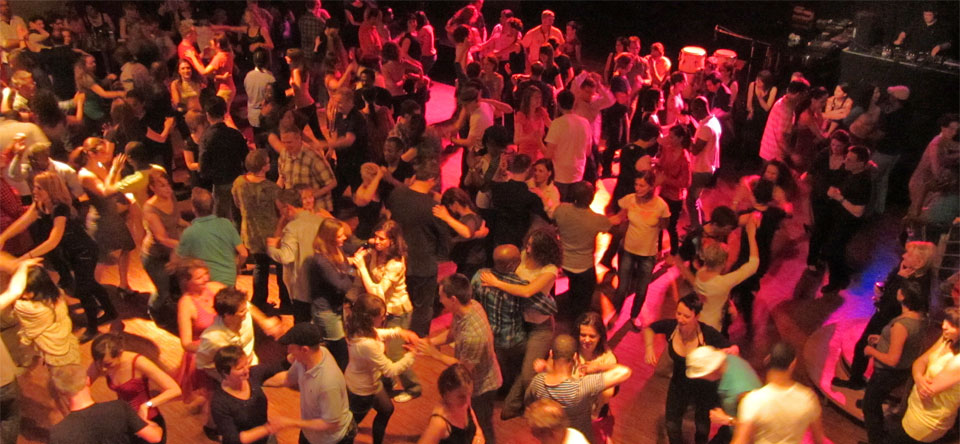9 Simple Techniques For Dance San Francisco
Wiki Article
The smart Trick of Dance San Francisco That Nobody is Discussing
Table of ContentsExamine This Report about Dance San FranciscoGetting The Dance San Francisco To WorkDance San Francisco Can Be Fun For EveryoneOur Dance San Francisco Diaries
Dance type Salsa training in Ecuador Salsa is a Latin dancing, associated with the music style of the very same name, which was first promoted in the USA in the 1960s in New York City City. Salsa is a blend of Cuban dancings, such as mambo, pachanga, and rumba, in addition to American dancings such as swing and touch. The term "salsa" was coined by Johnny Pacheco in the 1960s in New york city, as an umbrella term for Cuban dancing music being played in the city at the time. Salsa as a dance emerged soon after, being a mix of mambo (which was preferred in New York in the 1950s) as well as Latin dances such as Son and Rumba As American dances such as swing and faucet.Salsa remains preferred around the world with enthnographic research study right into salsa having been done as much as Benin, and Ghana. Salsa is a partnered dance where the lead takes the follower through a series of rotates and turn patterns to songs.
The fundamental Salsa dance rhythm is composed of taking three steps for every 4 beats of music. Salsa dancers can likewise damage apart to dance solo, recognized as "sparkles". The 2 primary designs of salsa are linear and round.
Below, professional dancers circle around each other, similar to East Coast Swing. Both Cuban and Colombian salsa follow this round pattern. Integrating other dance designing techniques into salsa dancing has actually ended up being very usual for both males and females: foot job, arm work, body language, rotates, body isolations, shoulder shimmies, rolls, also hand styling, balancings, and lifts.
The Single Strategy To Use For Dance San Francisco
Salsa dancing is a worldwide dance that can be found in most municipal cities on the planet. Festivals are held every year, often called a Salsa Congress, in various host cities intended to attract a selection of salsa professional dancers from other cities and nations. The occasions bring professional dancers together to share their passion for the dancing, develop area, and share relocations and ideas.International Salsa Congress, 2004 at Bangalore Video clip showing salsa dance fundamentals For many years, several designs of salsa dancing have actually evolved around the globe. A lot of them work with each other, but others are different sufficient to make dancing in between dancers of various styles tough. Salsa has numerous resemblances with various other partner dancings, the styles and skills discovered in salsa can be put on another Latin dancing like Bachata. Including other dancing designing techniques into salsa dancing has actually additionally come to be typical, with professional dancers of one design including designs and activities of others to develop brand-new blends of dancing designs.
It is a straight kind of salsa, where dancers dance in a port, comparable to LA design salsa - bay area salsa dancing. Unlike other designs of salsa, nevertheless, New York design is danced on the second beat of the songs (" on 2"), and the fan, not the leader, actions ahead on the first action of the music
Among one of the most significant numbers in New york city style salsa is Eddie Torres. https://www.dreamstime.com/dancesf_info (called "the Mambo King"), who is attributed with helping to define the on 2 salsa timing (based upon mambo) and assisting to popularize it by educating it in dance studios in New York and with early training tapes
Dance San Francisco Things To Know Before You Get This
Fundamental action for LA design, with leader's action in blue Salsa program dance Los Angeles style salsa (LA design) is danced "on 1" where dancers break ahead on the initial beat of the songs, in comparison to New York style which is danced on 2. LA style salsa is danced straight or "port" with professional dancers trading positions throughout the dance, unlike Cuban salsa which is danced in a much more round fashion.In this pattern, the leader progressions on 1, steps to the right on 2-3 while our website transforming 90 levels counter-clockwise (facing to the left), leaving the slot open. The fan then steps straight ahead on 5-6 and turns on 78, while the leader makes an additional 90 levels counter-clockwise and somewhat forward, returning right into the slot.
The "Vazquez Brothers" (Luis Vazquez, Francisco Vazquez, and Johnny Vazquez) are credited for the early development and development of LA Style. Luiz Vazquez was the founder of Los Angeles's initial salsa dance team, Salsa Brava.

Dance San Francisco Things To Know Before You Get This
The name Casino site is originated from the Spanish term for the dance halls, "Casino sites Deportivos" where much social dancing was done among the better-off, white Cubans throughout the mid-20th century and onward (bay area salsa dancing). Historically, Gambling enterprise traces its beginning as a companion dancing from Cuban Son, Cha Cha Cha, Danzn and Guaracha
Report this wiki page